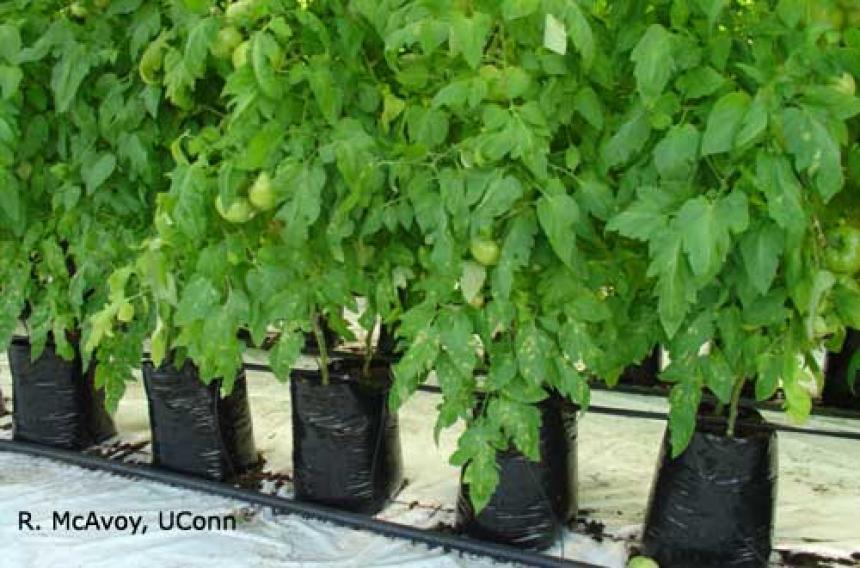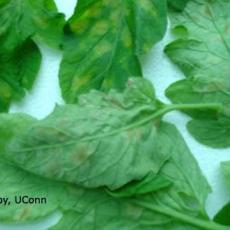Since the disease needs high humidity or wet leaf surfaces, symptoms often first appear in areas of the house exposed to wet conditions such as the outside rows when the roll-up sides of the house are left open at night and dew settles on the leaves. This photo shows leaf mold symptoms on the outer row of plants in a greenhouse with roll up sides. Here, the grower was leaving the sides open at night even though outside temperatures were falling into the low 50's.
Leaf mold is caused by the fungus, Fulvia fulva. The pathogen only affects tomatoes and in New England it is primarily a problem in greenhouses. This disease needs high humidity or wet plant surfaces. Leaf mold symptoms typically appear on older leaves first. On the upper leaf surface, symptoms appear as a series of randomly spaced, diffuse pale-green or yellowish spots. On the underside of the leaf the spots appear velvety and tan in color but become darker over time as seen here. As the disease progresses, the leaf spots turn yellowish brown and the leaves begin to curl, wither and drop prematurely. If left unchecked, this disease can kill flowers and cause a black, leathery stem-end rot on fruit. If green fruit are affected the fruit may develop lop-sided shape with one normal side and one stunted side; the stunted side will not ripen normally.
Leaf mold caused by Fulvia fulva is most severe when tomatoes are grown under conditions of high humidity. Spore germination requires relative humidity greater than 85 % and disease development is optimal at 22-24 C. The fungus survives as a saprophyte on crop debris and as sclerotia or conidia in the soil. Seed can be contaminated and serve as a primary source of inoculum. The conidia are spread by air, water, tools, workers, and maybe insects and can persist for up to a year. Start with seed certified to be disease free or treat seed with hot water. Minimize periods of leaf wetness by avoiding watering foliage, circulating air with fans, staking and pruning, and adequate row and plant spacings. Diseased leaves should be pruned, placed in a plastic bag, and destroyed. When Leaf Mold has been a problem, all plant material should be removed and destroyed at the end of the season, and the greenhouse disinfected. Resistant cultivars are available.
Fact Sheet: Reducing Humidity in the Greenhouse

